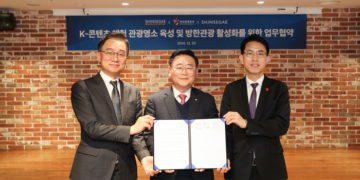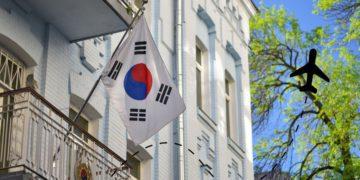Over 32 million Koreans are on the move this Chuseok. From toll waivers to visa-free tourism, the 2025 Golden Holiday is redefining Korea’s travel economy.
The Great Migration: Chuseok 2025 Becomes a Travel Super-Season
When the Chuseok break collided with National Foundation Day and Hangeul Day this year, it produced what many called “the Golden Chuseok”—an unprecedented 11-day holiday that turned the country into a moving map of departures, arrivals, and data points. According to the Korea Transport Institute (KOTI), more than 32.18 million Koreans traveled between October 2 and 12, a record that demonstrates how a traditional family holiday has evolved into a national travel festival.
Unlike past years, the surge isn’t peaking in one frantic day. Forecasts suggest demand is spreading out across the full holiday window, as flexible leave policies and remote work options allow staggered departures. Highways remain crowded, but traffic data indicates smarter timing and route selection among travelers, a sign that Korea’s holiday culture is adapting to digital tools and changing lifestyles.
The larger story is about transformation. What was once a family ritual centered on ancestral rites is becoming a mobility-driven holiday economy. Every toll waiver, flight booking, and train schedule now feeds into a wider pattern. It shows how Chuseok has evolved from a symbolic harvest celebration into a real-time test of national coordination and economic momentum.
Policy & Infrastructure: The Government as a Tourism Engine
Chuseok 2025 is shaping up to be more than a cultural or travel event — it’s becoming a policy experiment in motion. For the first time, multiple ministries are coordinating to engineer mobility and stimulate regional tourism through a mix of incentives and operational reforms designed for the extended “Golden Holiday” period.

Highways Become Policy Tools
The Ministry of Land, Infrastructure and Transport (MOLIT) has waived all expressway tolls from October 4 to 7, a move designed to spread departures and lower fuel-cost burdens. Forecasts from the Korea Transport Institute (KOTI) show 6.67 million vehicles on the roads on Chuseok day and an average of 5.42 million per day across the holiday — only 2.4 percent lower than last year despite the longer break. That small dip signals diffused demand, not decline — travel is spreading out over more days instead of peaking in one chaotic rush.
Airports Under Strain, Systems Hold
An airport-worker strike that began on October 1 is testing the limits of Korea’s aviation system. Instead of paralysis, airlines have added 500 extra flights and opened terminals early at Incheon and Gimpo. Queues are long, but operations continue — a sign that contingency planning and digital queue management are finally paying off.
Visa Policy Turns Into Economic Strategy
In parallel, the government has opened visa-free entry for Chinese tour groups, timed deliberately to overlap with China’s Golden Week. It’s a rare case where foreign policy, tourism, and retail strategy align. The expectation: a short-term lift for Seoul and Busan’s duty-free stores and Jeju’s hotels — and a signal that holiday diplomacy can double as market recovery.
From Ritual Calendar to Economic Calendar
Together, these measures show how Korea is re-engineering public holidays into economic instruments. What used to be an annual traffic crisis is now a managed flow of spending, tourism, and mobility. If this Chuseok experiment holds, “golden holidays” may soon be scheduled, not accidental — designed for both culture and GDP.
From Family Rites to Road Trips: The Behavioral Shift Behind the Numbers
If Chuseok once symbolized family gatherings and ancestral reverence, the 2025 edition revealed a generational realignment. Fewer Koreans traveled “home” for traditional rites — and more treated the extended break as an opportunity for leisure, tourism, and personal time.
Travel Is Now a Personal Statement
A recent Biz Chosun survey found that 51% of respondents planned neither travel nor ancestral visits, while 18% said they would travel domestically or abroad. That data signals a deeper cultural transformation: younger generations, especially Millennials and Gen Z, are redefining Chuseok as a holiday of movement rather than stillness — one centered on experience over obligation.
This evolution is playing out vividly on social media. On X (formerly Twitter), hashtags like #추석, #한가위, #귀성길, and #연휴시작 have dominated Korean feeds since the start of the holiday, replacing traditional family posts with clips of traffic jams, travel vlogs, airport check-ins, and Jeju sunsets. On Instagram and TikTok, “Chuseok travel diaries” are trending, depicting temple stays, coastal drives, and pop-up markets, illustrating how rituals are giving way to curated experiences.
Data Reflects a Smarter Traveler
Even travel timing shows an intentional shift. Instead of mass departures at dawn, the Korea Transport Institute (KOTI) found that 14.8% of Koreans planned to leave between 10–11 a.m. on Oct 5–6, while 16.4% intended to return between 2–3 p.m. on Oct 8 — a pattern suggesting that travelers now optimize around comfort, data, and congestion apps rather than tradition.
Leisure Over Lineage
Sociologists argue that these behaviors reflect the post-pandemic revaluation of time. Extended holidays are being recast as personal resets, and industries are responding. From domestic tour operators to EV rental startups, businesses are tailoring products to the “modern Chuseok traveler” — one who values convenience, flexibility, and wellness over duty.
The question for the travel industry isn’t whether this shift will continue, but how quickly Korea’s holiday economy will pivot to match it. As family traditions evolve, consumer mobility has become Korea’s newest cultural ritual.
Winners and Movers: Regional Tourism and the New Economic Geography of Chuseok
Jeju Leads Korea’s Holiday Travel Boom
If highways were the arteries of the 2025 Chuseok, Jeju Island was its beating heart. According to the Korea JoongAng Daily, the island expects about 337,000 visitors between October 3 and 9, a 10 percent increase over last year’s 305,455. Airports and ferry terminals are running at near-capacity, and hotel occupancy is approaching 95 percent. Jeju’s surge confirms its position as Korea’s default “escape island” — the first choice when extended holidays align with late-autumn weather.
Beyond Jeju: Gyeongju and Busan Surge
The boom is not limited to the island. Online travel agencies such as Agoda and Trip.com report search spikes of +91 percent for Gyeongju, while Busan remains the most-booked coastal city. This shows that travellers are rediscovering Korea’s mid-sized cultural destinations, combining history, walkability, and regional cuisine. These cities are emerging as counterweights to Seoul — proof that domestic tourism is spreading its footprint.
Outbound Travel: The Parallel Boom
At the same time, Koreans are looking outward. Data from Aju Press shows an 80 percent jump in overseas bookings for the Chuseok week, led by Japan, Taiwan, and Vietnam. Airlines have responded with extra charters and flash sales, targeting young travellers seeking quick international breaks. The result is a “dual-flow” economy — domestic sites are busy, but airports are too, suggesting that the holiday is expanding total travel demand rather than shifting it.
Markets and Mobility Drive Local Spending
On the ground, regional commerce is enjoying a smaller but meaningful boost. Seoul and Busan have rolled out 30 percent holiday discounts at traditional markets, while the MOLIT toll-free policy has helped funnel shoppers into local districts instead of big-box malls. These micro-policies are converting traffic volume into spending — an early sign that mobility management and regional retail can reinforce each other.
A Decentralized Holiday Economy
All these patterns point to a new geography of Chuseok. Instead of millions converging on Seoul or family hometowns, spending and movement are now distributed across islands, heritage corridors, and smaller cities. For policymakers, this decentralisation is both a relief and an opportunity — a preview of how national holidays can function as regional stimulus events, not just cultural breaks.
Looking Ahead: From Golden Holiday to Growth Strategy
Turning Holidays into Economic Tools
Chuseok 2025 is demonstrating how a public holiday can double as an economic management strategy. The coordination between toll waivers, visa policy, and air-traffic planning shows that the government is no longer just reacting to congestion — it’s using mobility to stimulate spending. Analysts expect this “holiday engineering” model to appear again in future long breaks such as Seollal 2026 or the next National Foundation Day stretch, as Korea tests new ways to manage demand without large subsidies.
Industry Learns from the Data
For the travel and hospitality sector, this year’s real-time data may become a blueprint. Airlines are tracking seat-load patterns hour-by-hour; highway authorities are mapping traffic peaks for predictive pricing; tour operators are designing data-driven Chuseok packages that start earlier and end later to spread bookings. The 2025 experiment is proving that analytics, not intuition, now drive Korea’s holiday economy.
Culture and Commerce Converge
The behavioral shift away from ancestral rites doesn’t mean tradition is dying; it’s evolving. Temple-stay programs, local festivals, and craft markets are blending heritage with leisure, turning cultural sites into economic assets. As Biz Chosun noted, more than half of Koreans are now redefining the holiday around rest, travel, or personal reflection. This convergence of culture and consumption is reshaping what “Chuseok” means to the next generation.
The Road Ahead
With 32 million projected travelers, Jeju arrivals up 10 percent, and outbound trips rising 80 percent, the message is clear: mobility has become Korea’s newest economic engine. If policymakers continue linking infrastructure, labor planning, and tourism incentives, Chuseok could evolve from a seasonal spike into a predictable growth cycle. The challenge will be sustainability — keeping travel greener, crowds manageable, and local communities central to the gain.
Closing Thought
What began as a harvest festival is becoming an annual rehearsal for national coordination. Chuseok 2025 shows that when policy, data, and behavior align, holidays can move more than people — they can move the economy itself.
2,021 total views, 5 views today

















